placeElementElementElement functions can be customized with set and show rules.
set and show rules.Places content relatively to its parent container.
Placed content can be either overlaid (the default) or floating. Overlaid
content is aligned with the parent container according to the given
alignment, and shown over any other content added so
far in the container. Floating content is placed at the top or bottom of
the container, displacing other content down or up respectively. In both
cases, the content position can be adjusted with dx and
dy offsets without affecting the layout.
The parent can be any container such as a block, box,
rect, etc. A top level place call will place content directly
in the text area of the current page. This can be used for absolute
positioning on the page: with a top + left
alignment, the offsets dx and dy will set the
position of the element's top left corner relatively to the top left corner
of the text area. For absolute positioning on the full page including
margins, you can use place in page.foreground or page.background.
Examples
#set page(height: 120pt)
Hello, world!
#rect(
width: 100%,
height: 2cm,
place(horizon + right, square()),
)
#place(
top + left,
dx: -5pt,
square(size: 5pt, fill: red),
)

Effect on the position of other elements
Overlaid elements don't take space in the flow of content, but a place
call inserts an invisible block-level element in the flow. This can
affect the layout by breaking the current paragraph. To avoid this,
you can wrap the place call in a box when the call is made
in the middle of a paragraph. The alignment and offsets will then be
relative to this zero-size box. To make sure it doesn't interfere with
spacing, the box should be attached to a word using a word joiner.
For example, the following defines a function for attaching an annotation to the following word:
#let annotate(..args) = {
box(place(..args))
sym.wj
h(0pt, weak: true)
}
A placed #annotate(square(), dy: 2pt)
square in my text.

The zero-width weak spacing serves to discard spaces between the function call and the next word.
Accessibility
Assistive Technology (AT) will always read the placed element at the point where it logically appears in the document, regardless of where this function physically moved it. Put its markup where it would make the most sense in the reading order.
ParameterParameterParameters are input values for functions. Specify them in parentheses after the function name.
place(,,,,dx:,dy:,)->Relative to which position in the parent container to place the content.
- If
floatisfalse, then this can be any alignment other thanauto. - If
floatistrue, then this must beauto,top, orbottom.
When float is false and no vertical alignment is specified, the
content is placed at the current position on the vertical axis.
Default value: start
scopeSettableSettableSettable parameters can be set using the set rule, changing the default value used thereafter.
scopeset rule, changing the default value used thereafter.Relative to which containing scope something is placed.
The parent scope is primarily used with figures and, for
this reason, the figure function has a mirrored scope
parameter. Nonetheless, it can also be more generally
useful to break out of the columns. A typical example would be to
create a single-column title section
in a two-column document.
Note that parent-scoped placement is currently only supported if float
is true. This may change in the future.
Show example
#set page(height: 150pt, columns: 2)
#place(
top + center,
scope: "parent",
float: true,
rect(width: 80%, fill: aqua),
)
#lorem(25)
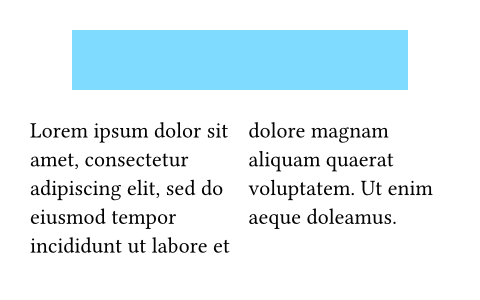
Available string values
columnPlace into the current column.
parentPlace relative to the parent, letting the content span over all columns.
Default value: "column"
floatSettableSettableSettable parameters can be set using the set rule, changing the default value used thereafter.
floatset rule, changing the default value used thereafter.Whether the placed element has floating layout.
Floating elements are positioned at the top or bottom of the parent
container, displacing in-flow content. They are always placed in the
in-flow order relative to each other, as well as before any content
following a later place.flush element.
Show example
#set page(height: 150pt)
#let note(where, body) = place(
center + where,
float: true,
clearance: 6pt,
rect(body),
)
#lorem(10)
#note(bottom)[Bottom 1]
#note(bottom)[Bottom 2]
#lorem(40)
#note(top)[Top]
#lorem(10)

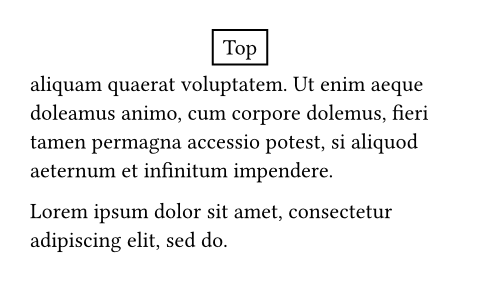
Default value: false
clearanceSettableSettableSettable parameters can be set using the set rule, changing the default value used thereafter.
clearanceset rule, changing the default value used thereafter.The spacing between the placed element and other elements in a floating layout.
Has no effect if float is false.
Default value: 1.5em
dxSettableSettableSettable parameters can be set using the set rule, changing the default value used thereafter.
dxset rule, changing the default value used thereafter.The horizontal displacement of the placed content.
Show example
#set page(height: 100pt)
#for x in range(-8, 8) {
place(center + horizon,
dx: x * 8pt, dy: x * 4pt,
text(
size: calc.root(x + 10, 3) * 6pt,
fill: color.mix((green, 8 - x), (blue, 8 + x)),
)[T]
)
}
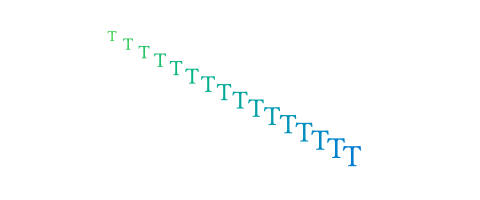
This does not affect the layout of in-flow content.
In other words, the placed content is treated as if it
were wrapped in a move element.
Default value: 0% + 0pt
dySettableSettableSettable parameters can be set using the set rule, changing the default value used thereafter.
dyset rule, changing the default value used thereafter.The vertical displacement of the placed content.
This does not affect the layout of in-flow content.
In other words, the placed content is treated as if it
were wrapped in a move element.
Default value: 0% + 0pt
bodyRequiredRequiredRequired parameters must be specified when calling the function.PositionalPositionalPositional parameters can be set by specifying them in order, omitting the parameter name.
bodyThe content to place.
DefinitionsDefinitionsThese functions and types can have related definitions. To access a definition, specify the name of the function or type, followed by the definition name separated by a period.
flushElementElementElement functions can be customized with set and show rules.
flushset and show rules.Asks the layout algorithm to place pending floating elements before continuing with the content.
This is useful for preventing floating figures from spilling into the next section.
Show example
#lorem(15)
#figure(
rect(width: 100%, height: 50pt),
placement: auto,
caption: [A rectangle],
)
#place.flush()
This text appears after the figure.
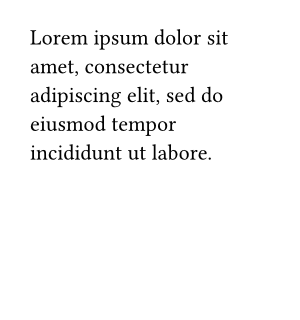
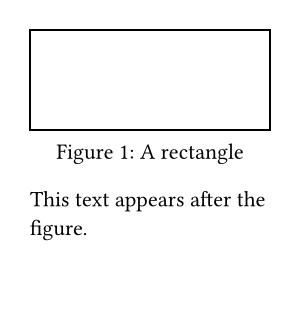
place.flush()->